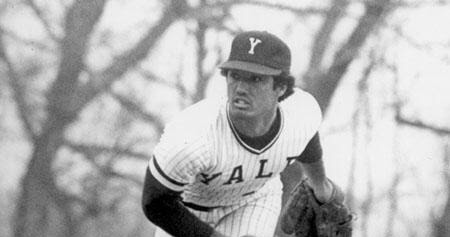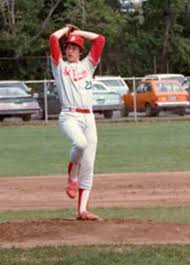
On May 21, 1981 the Mets had an off day. A player’s strike was looming, and the Mets were on their way to a 41 – 62 record in the last season of Manager Joe Torre‘s regime in Queens. But future Mets were active that day in what is now widely known as the greatest college game ever played.
To set the scene, the game was played at Yale Field in Connecticut. Built in 1927, before the Great Depression, Yale Field did not have a club house, so the opposing team, St. John’s had to come dressed on the team bus. The game was an NCAA Northeast Tournament game, the equivalent of the college playoffs. St. John’s came into the game with a 31-2 record, and led the Northeast in runs scored. On the mound for St. John’s was junior Frank Viola, who was 25-2 in his 3-year career and had led St. Johns to the 1980 College World Series.
Playing David against St. John’s Goliath that day was a right-handed college senior Ron Darling, who had come to Yale intending to play football for legendary coach Carm Cozza, but wound up playing only baseball. Ron Darling made his decision look correct that day as he no-hit the Redmen for the first nine innings that day.

The game went to extra innings, although Yale was able to get some Elis on the basepaths with seven hits and four walks against Frank Viola, none came around to score. Viola struck out eight during his 11 innings of work. Darling no-hit St. Johns for an additional two innings, and struck out 16 Redmen during the game.
So after 11 full innings, both pitchers have shutouts going, and Darling has a no-hitter in place. Darling is used to pitching complete games, as he has 27 complete games in 27 starts for Yale during his college career coming into this game. This would be complete game 28.
In the 12th inning, St. John’s Steve Scafa had a bloop single with his aluminum bat to left field and subsequently stole both second and third.
Later in the inning with one out and runners at the corners, St John’s tried a double steal. Darling was supposed to intercept the throw from catcher Paterno, but he slipped as he broke off a slider and the ball went through to second baseman Israel Rosales. There was a brief rundown, and when first baseman Brien O’Connor threw home, Scafa slid under the tag and scored.
In the bottom of the inning, in what would become a great trivia question, it was Eric Stampfl who closed out Yale in the 12th to give St. Johns the 1-0 victory. The Yale Bulldogs were eliminated the next day from the College playoffs by Central Michigan.
Snippets are available on YouTube.
Yale’s team that day featured two future NFL players, Joe Dufek and Rich Diana, and a future NHL player, Bobby Brooke. St. John’s had not only Viola, but future major league pitcher John Franco.
Darling was drafted in the first round (9th selection) of the 1981 draft by the Rangers about three weeks after this game was played, and was traded to the Mets in April of 1982 along with Walt Terrell in exchange for Lee Mazzilli.
Frank Viola was a second round draft choice by the Twins in the 1981 draft, and was traded to the Mets at the deadline in July of 1989 for Rick Aguilera, Tim Drummond, Kevin Tapani, David West and a PTBNL. John Franco was also drafted in the 1981 draft, in the fifth round by the Dodgers. In 1989 Franco was traded by the Reds with minor leaguer Don Brown to the Mets for Kip Gross and Randy Myers.
Who was the most accomplished MLB pitcher present that day? While Viola (176 MLB wins, 1988 AL Cy Young Award winner, 3.31 ERA with the Mets), John Franco (2.89 ERA and 424 saves, including 276 saves with Mets) and Darling (136 MLB wins including 99 with the Mets and a victory in the 1986 World Series) were all present that day, the answer may be Smokey Joe Wood.
Joe Wood, was a former Yale coach and Red Sox star whose 1912 duel with Walter Johnson made baseball history, can be seen at the nine second mark in the clip above. Smoky Joe Wood‘s career record was 117-57 with a 2.03 ERA. Wood came to Yale ballpark that day with Hall of Fame writer Roger Angell. The game, as seen through their eyes, lives on in the pages of “The Summer Game.”
LGM















